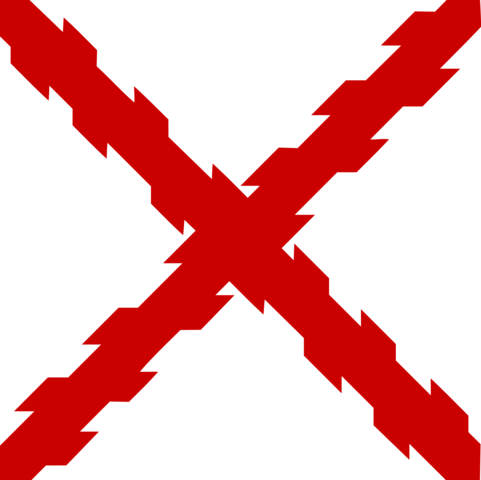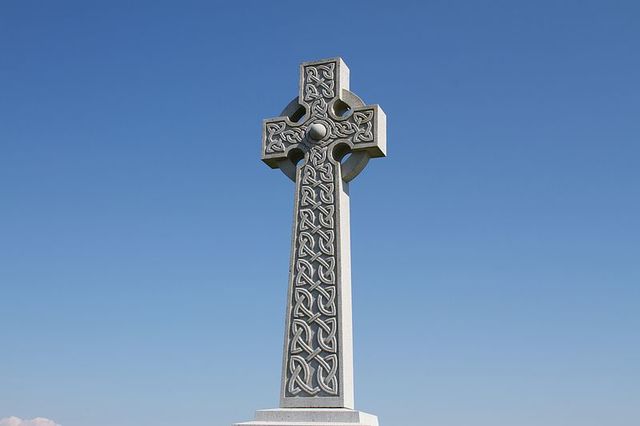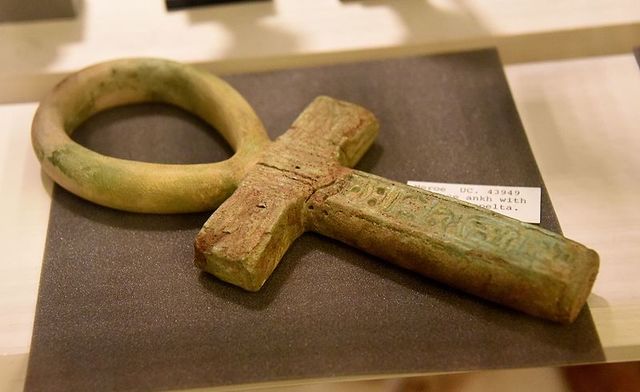Hanging from our necks or on the doors to our houses. Above our beds or at a temple altar. Find some of the many crosses in the world here and discover their secrets.

“So he released Barabbas for them; and after flogging Jesus, he handed him over to be crucified.” Matthew 27:26
Cross of Burgundy.
The Cross of Burgundy is a representation of the Cross of Saint Andrews in which the trunks that form the cross are roughly cut and the knots where the branches were cut are still visible.
The Cross of Burgundy has been included in the coat of arms and flags of Spain, for both land and sea, since 1506, where it was first introduced to the Burgundian Guard of Philip the Fair.

“Now when the centurion and those with him, who were keeping watch over Jesus, saw the earthquake and what took place, they were terrified and said, 'Truly this man was God’s Son!' ” Matthew 27:54
Celtic cross
The Celtic cross is a religious icon made from a Christian cross with a circle around the cross section. It dates back to the first days of Christianity Ireland, where the basic design of the High crosses: monumental crosses made from stone and richly ornate with Celtic art symbols.
It is a simple Christian cross with its own meaning. The goal of the ring is that when the sun shines on it, it will keep away demons.

“For you do not give me up to Sheol, or let your faithful one see the Pit.” Psalms 16:109
The Greek cross or Crux Quadrata is a cross made up of 4 equal length arms that intersect at a right angle. In architecture the intersection is a square plan in which the nave, chancel and transept arms are of equal length forming a Greek cross.
The Greek cross plan in churches have the same length for the nave and transept and they intersect in the center. When the nave and the transept are different lengths it is considered a Latin cross plan.

“ For Christ also suffered for sins once for all, the righteous for the unrighteous, in order to bring you to God. He was put to death in the flesh, but made alive in the spirit,” Peter 3:18
Ankh cross
The Ankh is an Egyptian hierogliphic cross that signifies life, it is a very common symbol in this culture's iconography. It is also known as the Crux Ansata in latin (a cross with the upper part in the shape of an oval, loop, or handle), the "Key of Life", or the Egyptian cross
In Ancient Egypt it was linked to the gods who were depicted while holding this symbol, indicating their power over life and death, their innate and eternal condition.

“When Jesus had received the wine, he said, “It is finished.” Then he bowed his head and gave up his spirit.” John 19:30
Chakana.
It is a Quechua term that means "ladder" or "object like a bridge", also known as "Andean cross" or "Square cross". The Chakana is an ancient aboriginal symbol from the indigenous tribes of Central Andes in the territories where the Incan culture (Southern Colombia, Ecuador, Peru, Bolivia, Chile, and Argentina)as well as some pre-Incan cultures(Peru and Bolivia) were developed.
It is possible that it was called Tsakana in Ancash, Huanuco, and Nor Lima.
“When they came to the place that is called The Skull, they crucified Jesus there with the criminals, one on his right and one on his left.” Luke 23:33
Chi Rho
The Chi Rho is the most common representation of the Christogram or monogram of Christ: XP. It consists of the Greek letters X and P, the first two letters of Christ's name in Greek: ΧΡΙΣΤΟΣ (Khristos) - "The annointed". In other versions, the P is substituted for the T to make a small Latin cross.
The Chi Rho often appears alongside other elements, such as the letters for alpha and omega, the first and the last words in the Greek alphabet, that represent Christ as the beginning and the end of all things.